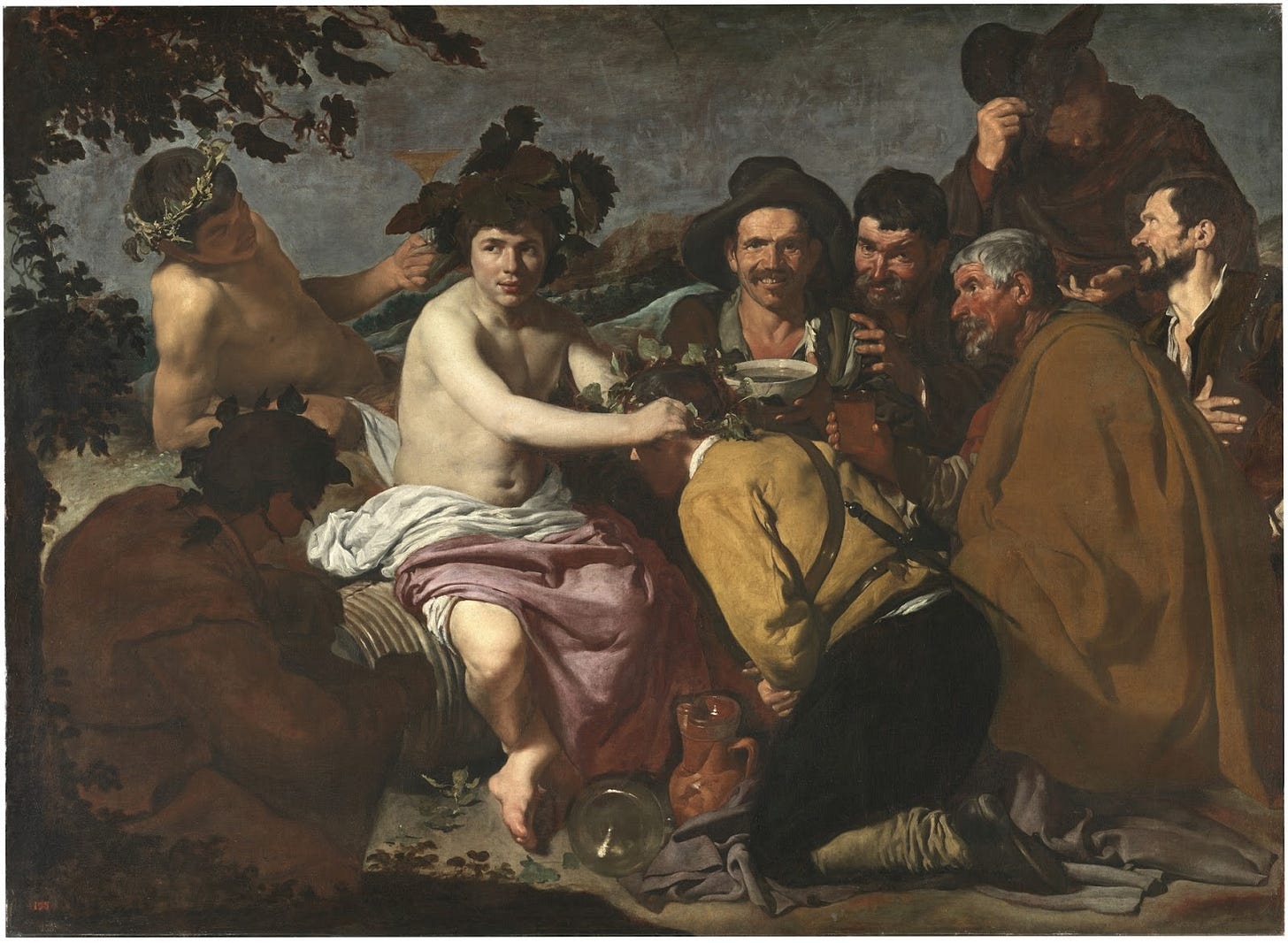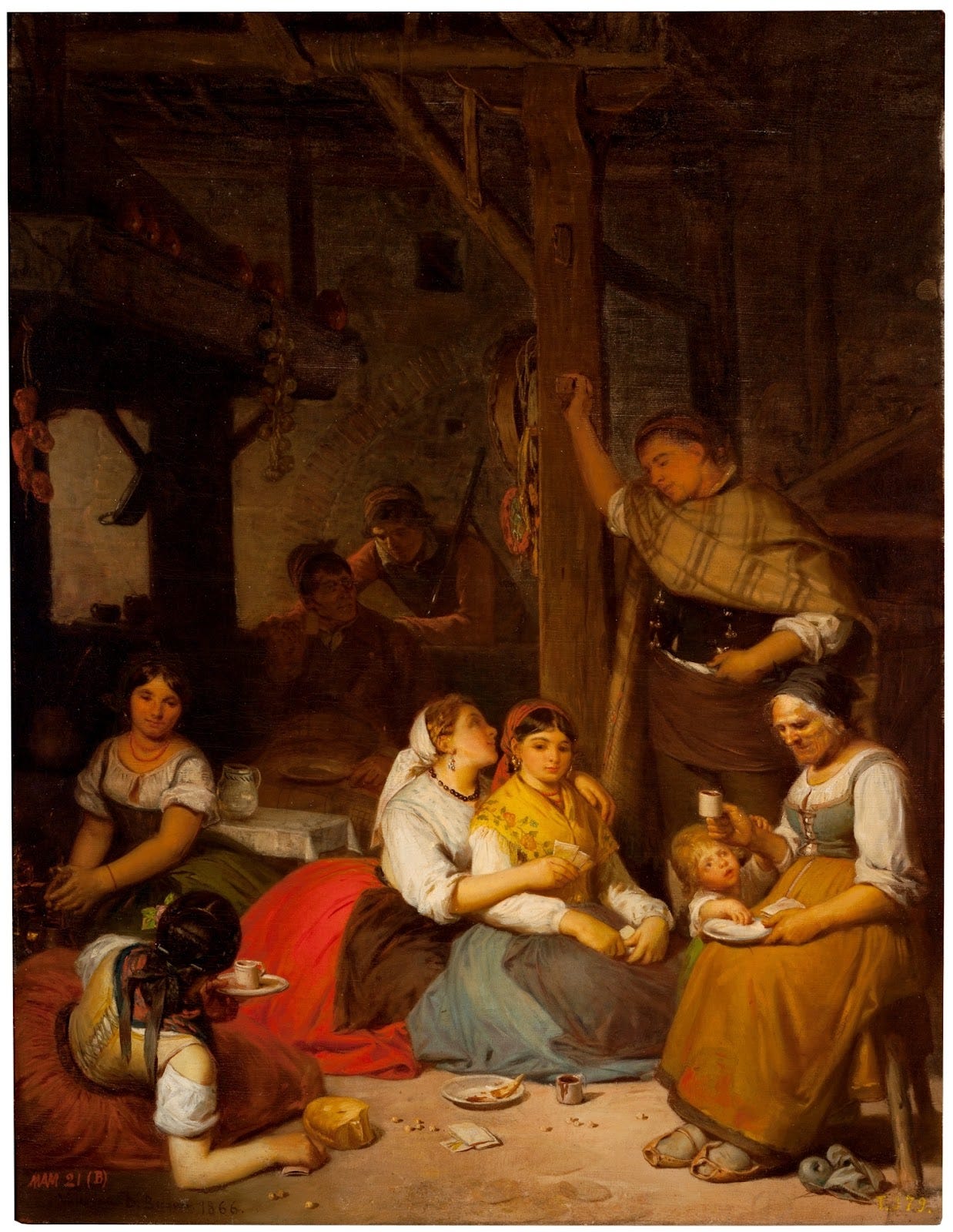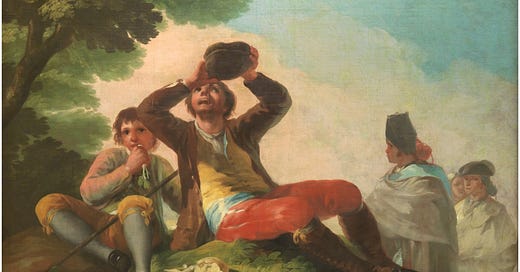A few years ago, I embarked on a very enjoyable curated wine tour at Madrid’s Thyssen-Bornemisza Museum, which cleverly paired paintings with wine history. It ended in Mercado de San Miguel with a fun wine tasting in El 19 de San Miguel. Niche, focused tours—whether they revolve around fashion, politics, or food have always been my thing. But why don’t more museums embrace this concept? Why should we settle for just looking at paintings when we could actually drink or taste history?
The Thyssen tour covered a broad European wine culture, from Greek and Roman myths to the Renaissance. But if we’re talking about drinks with a deeply Spanish identity - drinking chocolate, sherry, water (yes!), or the once-ubiquitous wine carrier, the bota de vino -then El Prado is the place to explore. One of the world’s great art museums, it houses an unparalleled collection of Spanish and European masterpieces, spanning the 12th to early 20th centuries.
What follows is my personal Prado-inspired drinking tour, pairing some of my favorite artworks with drinks and typical places in Madrid to enjoy them.
Stop 1: Portable Wine
Painting: El Bebedor (1777) – Francisco de Goya
When I was little, my grandfather still carried a bota de vino (a traditional Spanish wineskin) on visits to his huerta (orchard). I saw adulthood as the moment you mastered the skill of tilting the bota just right, letting the thin stream of wine arc through the air without spilling.
El Bebedor offers a snapshot of this now unseen ritual. This cartoon (a preparatory design for a tapestry) was created for an over-the-window tapestry at the Palace of El Escorial. It shows two characters from Lazarillo de Tormes, Spain’s most famous picaresque novel. One is the hungry servant boy, nibbling on turnips and bread. The other, his blind master guzzling straight from a bota.
Pairing: Manzanilla pasada (aged manzanilla sherry). If manzanilla is the fresh, sea-breezy sherry of Sanlúcar de Barrameda, and amontillado sherry has notes of wood and nuts then manzanilla pasada is their offspring.
Bar: La Venencia (Calle de Echegaray, 7, Madrid)
A legendary sherry bar, frozen in time.
Stop 2: Public Drunkenness
Painting: Triumph of Bacchus or Los Borrachos (1628-29) – Diego Velázquez

This painting was originally titled Triumph of Bacchus, but when it was first exhibited, sharp-witted Madrileños gave it the second alternative name. In Spain, borracho or drunk is no casual term, it’s an insult. Being called one implies a loss of control. Some say that’s precisely why tapas culture exists: to keep drinking in check by pairing alcohol with food.
Velázquez captures this tension perfectly. A group of men sit drinking, caught between revelry and ruin, while the beautiful Bacchus himself watches over them.
Pairing: Vermú de Grifo (Tap Vermouth). A perfect blend of bitterness, sweetness, and herbal aromatics. Ordering a vermú instantly marks you as an aficionado.
Bar: Casa Alberto (Calle de las Huertas, 18, Madrid)
A classic Madrid taberna. Order vermú with a roasted artichoke dusted with ibérico ham, as an ode to the rural characters in Velázquez’s painting.
Stop 3: Drinking Chocolate & Merienda
Painting: The Interior of a House in a Village in Aragon, When the Family Gathers in the Afternoon to Have Hot Chocolate (1866) – Valeriano Domínguez Bécquer

If there’s one drink that defines a Spanish weekend long afternoon, it’s hot chocolate. Bécquer’s long-titled painting captures this moment-a family gathered in a simple home, drinking thick, rich chocolate and playing cards. From the 16th century onwards Spain was smitten with the very Aztec frothy chocolate drink they first encountered in Yucatán, Mexico. By the 19th century, chocolate was no longer a luxury; it was affordable and ingrained in daily life.
Pairing: Rich, velvety and thick hot chocolate
For the full experience, enjoy it with a pastry like flores de azúcar (sugar flowers, a deep fried pastry flower) or churros.
Place: Los Artesanos 1902 (Calle San Martín 2, Madrid)
This fifth-generation family of churreros uses a blend of three South American cacao varieties that they manufacture to craft one of Madrid’s finest hot chocolates.
Stop 4: The Overlooked History of Water
Painting: Las Meninas (1656) – Diego Velázquez
Water rarely gets a mention in Spanish drinking culture, but its history is as rich as any wine. Spain’s hot climate and centuries of Muslim influence (where alcohol was discouraged) made water a revered resource.
In Las Meninas, a small, ornate búcaro given to the Infanta Margarita Teresa sits at the heart of the scene. These vessels imported from South America, weren’t just for drinking water, they were status symbols. Many noblewomen even bit and ate small amounts of the clay, convinced they possessed special properties that could lighten their skin tone. Art historians even suggest that Velázquez's búcaro serves as a subtle criticism of the Hapsburg family's decadence and waning influence.
Pairing: Agua de Madrid
Madrid’s Sierra-fed water is arguably among Spain’s finest, low in limestone and refreshingly crisp.
Place: Any fountain in El Retiro Park or if you fancy drink a premium Spanish water like Solán de Cabras or Cabreiroa at a luxury hotel bar.
There you have it, a Prado-inspired drinking tour of Madrid. Whether it’s sherry in a time capsule, vermouth in a century-old taberna, , hot chocolate in a historic churrería or cool water from a public fountain Spain’s drinking culture is woven into its art and daily life.







